Even having grown up in California, I’m realizing I’m not built for this heat.
We’re 30 minutes or so outside of Reno, but it feels like I’m on the sun. I can feel my sunscreen baking off. Why the hell did I wear black today?
It’s okay; it’s worth it. I’m out here for a glimpse inside Tesla’s Gigafactory, days before its official grand opening. I’ll be one of the first people to step inside the building outside of those who helped build it. That’s worth a slight sunburn, right?
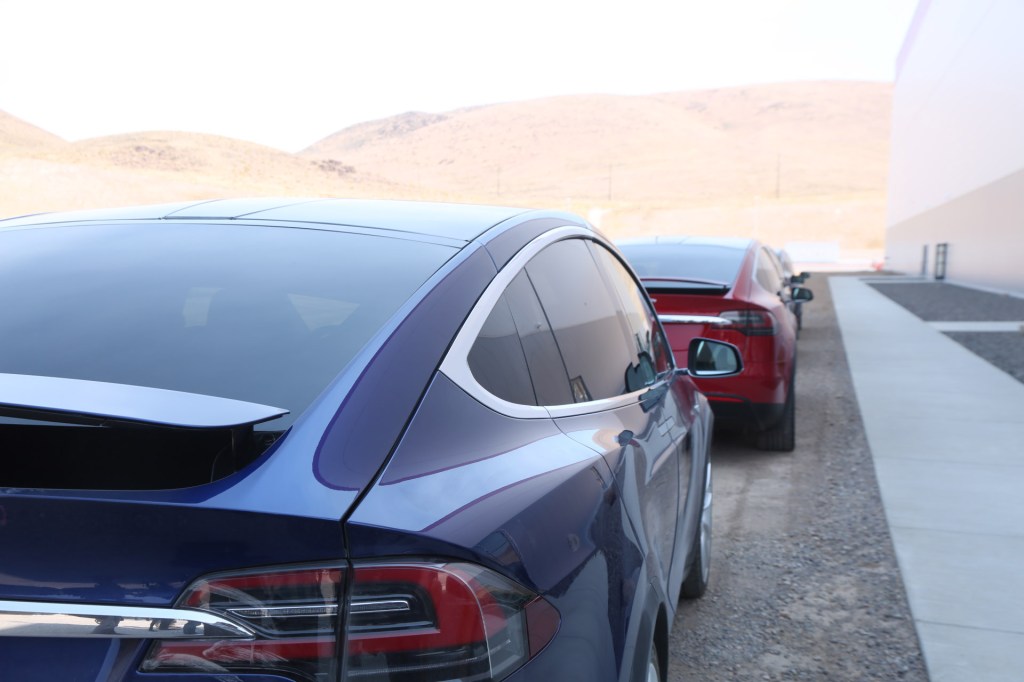
A row of Model X parked outside the Gigafactory
The machine that builds the machine
Tesla needs more batteries. Between the Model S, Model X, the upcoming Model 3 and its at-home solar energy storage product, the Powerwall, just about everything they put their name on uses a battery.
But batteries like the ones Tesla needs are expensive — and heavy. Even if Tesla could find a company in another country capable of producing the volume of batteries that it needs, just getting them onto a cargo ship and shipping them stateside would make up a sizeable chunk of the bill.
Thus, the Gigafactory. A colossal, $5 billion structure smack dab in the middle of the Nevada desert, meant to help Tesla meet its battery needs.
It’s “a machine to build the machines,” as Elon Musk refers to it.

Left: Section A of the factory. Right: Designers laying out the later sections, currently under construction.
A working work in progress
We enter on one side of the building — Section A, as it’s called.
To our left, row upon row of machines, racks and robotic arms responsible for assembling Powerwalls.
To our right, separated from the factory floor by just a hip-height dividing wall, are the designers. Their project? The rest of the Gigafactory.
You see, Tesla is moving into the Gigafactory as soon as each section — of which there are currently four in progress — is complete.
They’re working from the inside out, and it’s quite a sight to see. It’s like watching a robot build itself into a bigger, badder robot. Walking through the building is like viewing a timelapse; a gradient of construction.
Section A? Up and running, designers in place.
Section B? The walls are up and painted, but much of the clockwork — like two-story tall, gymnasium-sized machines that Tesla wouldn’t disclose the purpose of — are still being assembled.
Section C? Lifts, hardhats, painters and drywallers.
Section D? Raw steel beams as far as the eye can see.
When all is said and done, the Gigafactory will have the largest footprint of any building in the world.
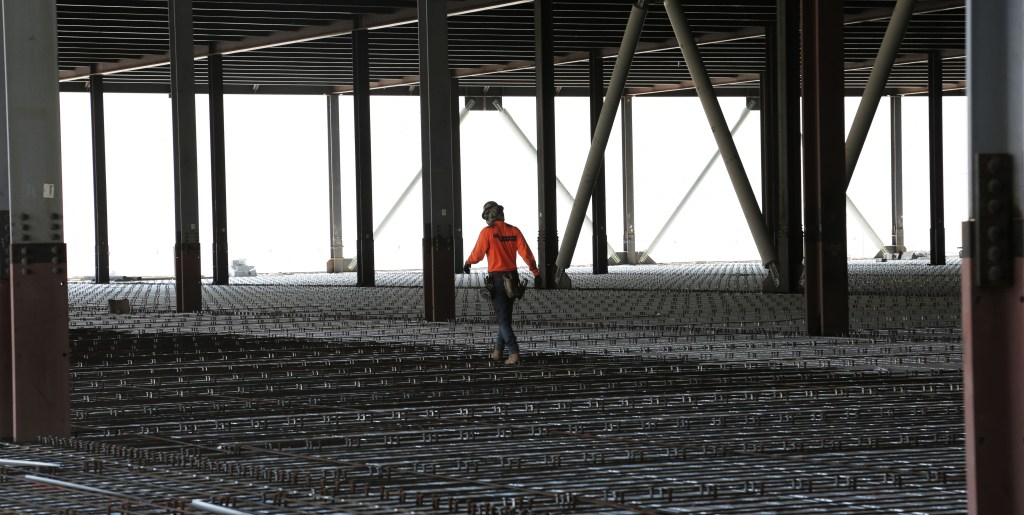
The still-raw Section D
Secret, super secret and top secret
We’ve been invited in for an early look, but that doesn’t mean we have an all-access pass. Even in most of the areas in which we are allowed, cameras generally aren’t (I’d have brought more pictures back if I could, I promise).
For every machine we’re able to see, two are shrouded under tarps. We enter a room with one machine that nearly scrapes the roof 40 feet above us — covered, of course, in 40 feet of tarp.
“Are those tarps there because it’s not finished yet, or because the machine is secret?” I ask.
“A bit of both,” replies someone from Tesla.
“What does that one do?”
“I can’t say.”
“What part of the process is it for?”
“Battery production.” (Essentially everything in this factory is ultimately for battery production.)
“Can you tell me anything else?”
“It’s part of either the cathode or anode process” — essentially a fancier way of saying that it’s for making batteries.
“…”
“Okay! On to the next room.”
The next room has another 40-foot tall machine, still covered. They won’t tell us what this one does, either.
So what’s the reason for the secrecy?
Ultimately, the Gigafactory isn’t just big for the sake of being big. Tesla, in partnership with Panasonic, is putting $5 billion into this place to have a playground on which they can build all the things they can’t build elsewhere. They’re building new stuff here to help them drive down the costs of the batteries they need… and they don’t want anyone to know exactly how it all comes together.
“[This factory] deserves more attention from creative problem solving engineers than the product it makes,” Musk would later tell us in a Q&A. “Over time… the majority of our engineering will actually go into designing the factory as a product itself… If we take a creative engineering person and apply them to designing the factory — this machine that makes the machine — they make 5 to 10 times the headway per hour than if they’re trying to improve the products it makes.”
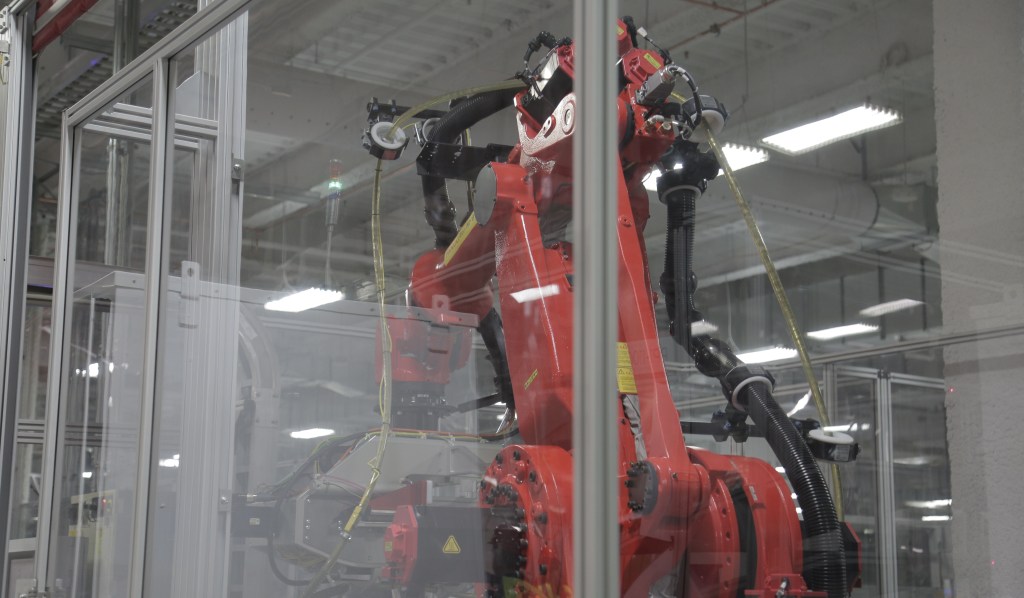
One of the few machines not shrouded in secrecy: a 10′ tall robotic arm used to assemble Powerwalls
What’s next?
Everyone calls this thing the Gigafactory — but that’s short for its official name, “Gigafactory 1.”
As you can probably grep from that “1” tacked on to the end there, Elon doesn’t want this to be the only Gigafactory.
In a Q&A, Elon confirmed that he wants to build Gigafactories in other countries. And he wants to build Gigafactories that handle both halves of the Tesla manufacturing equation — building the batteries AND building the cars. Currently, that job is set to be split between its car plant in Fremont, CA and Gigafactory 1 in Nevada. This one is in the U.S. because that’s where it needs the most batteries; as other countries show demand, they’ll build Gigafactories there.
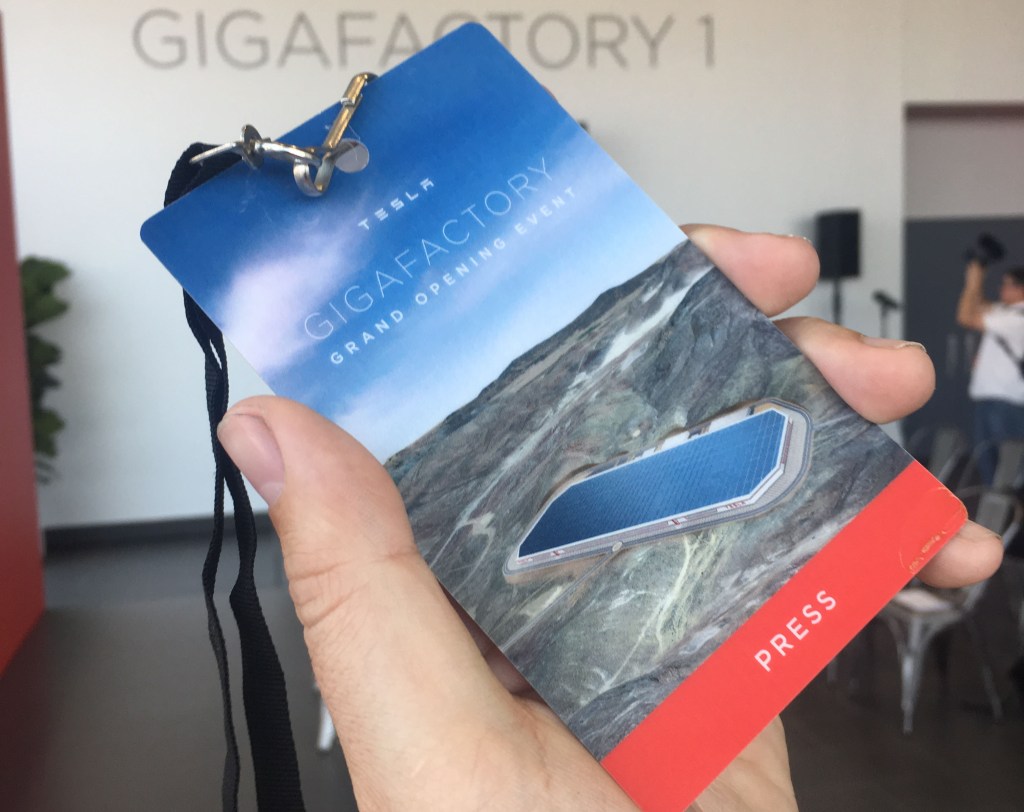
Even on the walls of the factory, it’s “Gigafactory 1”
But first, Elon needs to prove that this first $5 billion bet pays off.
It needs to help Tesla hit that 500,000-cars-per-year-by-2020 goal. It needs to produce more batteries, day in and day out, and for less money. Meanwhile, Tesla has to bring the Model 3 into production and fulfill hundreds of thousands of pre-orders, prove to the world that their autopilot is safer than human drivers and, as of last week, introduce promised products like a pickup truck and, of all things, a Tesla Semi.
Oh, and in all of his spare time, he’s going to keep building spaceships and figuring out how to get people on Mars. No big deal, right?
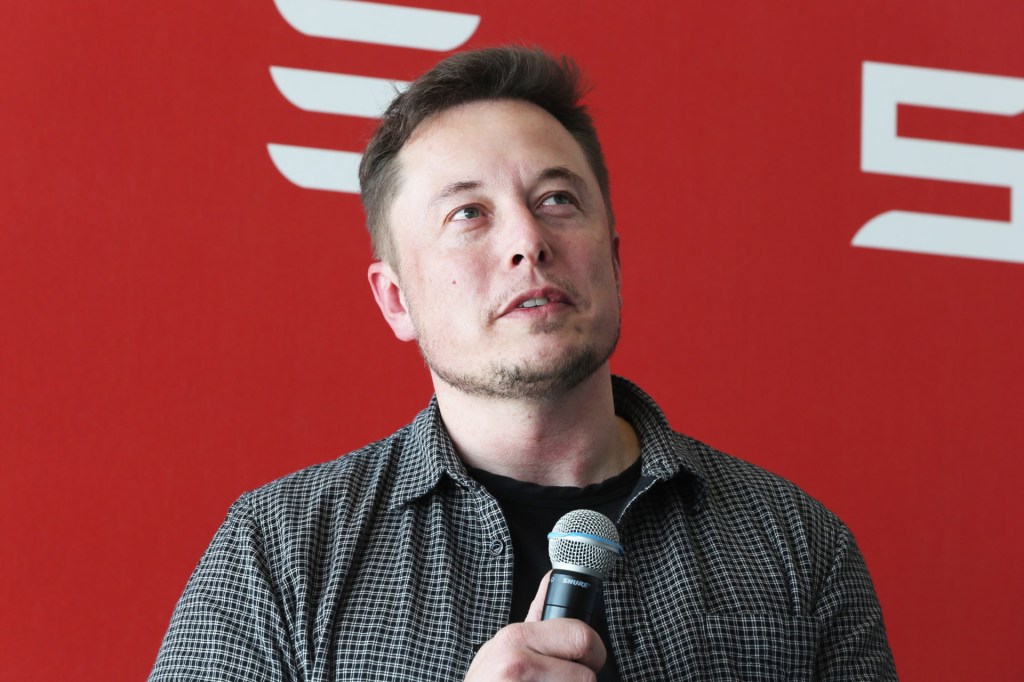
Elon Musk during a Q&A






























Comment